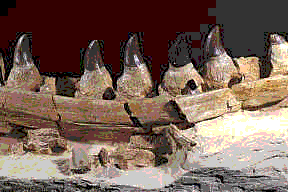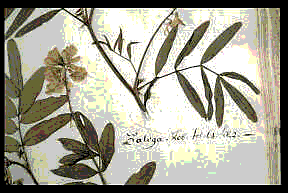Natural
History Museum of
Maastricht
Province of Limburg,
Maastricht






|
|
Field/Online
Collection(s):
|
-Botany, Entomology,
Mineralogy, Paleobotany, Vertebrate Paleontology,
|
 This
Museum ranks amongst the largest Natural History museums in
the Netherlands. It houses extensive collections in the
field of This
Museum ranks amongst the largest Natural History museums in
the Netherlands. It houses extensive collections in the
field of
- Geology/Paleontology - The
collections centre on fossils from the Late Cretaceous of
the Maastrichtian region being Europe's largest and most
important collections. In addition, there is a
Petrological Collection and a collection of fossils of
the Tegelen Clay.
- The Late
Cretaceous
Collection
comprises c. 105,000 fossils from the late Cretaceous
chalk deposits, representing the time interval also
referred to as 'Maastrichtian' (71.3 to 65.4 million
years ago). Top pieces are the remains of large
Mosasaurs and turtles and fragmentary remains of
terrestrial dinosaurs. But also the stratigraphic
collection of ammonites and echinoderms are of prime
importance since these fossils may serve as guide or
index fossils on the basis of which various chalk
deposits may be correlated. Other collections includes
samples of echinoderms, bryozoans, brachiopods with
some 50 holotypes and paratypes.Finally, the
collection appeared to include species still not
identified, and thus new to science.
- The Petrology
Collection
includes an extensive array of rock types from e.g.
Eifel and Ardennes, a mineral collection (of
importance for studies of the mineral contents of coal
beds in southern Limburg), an extensive collection of
flint types from all over Europe, a collection of Maas
gravel (e.g. of the Brunssumerheide) and a collection
of borehole cores of the Carboniferous and Devonian of
southern Limburg. The collection also includes an
array of corals, trilobites, brachiopods and sea
lilies from the Eifel.
- The Tegelen
Clay (Fossil)
Collection -
From the Tegelen clay deposits a large number of
well-preserved fossils have been collected, which
together illustrate well the flora and fauna of the
Tiglian, the time interval between 2.2 and 1.7 million
years ago, which was named after the village of
Tegelen. In addition to many plants, fossil remains of
species of beaver (2), panther, elephant, monkey,
tapir, rhinoceros, deer and pond tortoise were
found.
- Entomology - The entomology
collection comprises a large number of subcollections in
the field of insects and spiders. The principal
collections are those of ants, termites and
myrmecophiles, of grasshoppers and crickets and of
butterflies.
- Ants,
Termites &
Myrmecophiles
- The collection comprises, in addition to more than
1,000 ant species and in excess of 200 termite
species, more than 2,000 species of myrmecophiles.
Most specimens are dried but some of them are
preserved in alcohol. Also the collection has a unique
collection of beetles, butterflies, mites, bugs and
aphids which lived in ant nests.
- Grasshoppers
and Crickets -
This collection is a heterogeneous lot of
grasshoppers, crickets, mole crickets, cockroaches,
praying mantis, stick insects and leaf insects. The
collection comprises no fewer than 129 holotypes and
many dozens of paratypes. Some twenty genera and
species have been named after Willemse to honour or
thank him for his help with identifications. The
collection includes a library of 5,000
titles.
 
- Butterflies
- This collection which takes up most of the space in
the insect storage is comprised of more than 60,000
specimens, mainly from Limburg and adjacent areas.
Together they form an invaluable record of the
distribution of the various species over the years and
of the variation within the various species.
- Botany
- This Botany Collection is a well documented collection
of plants from the whole of southern Limburg between 1890
and 1943 and ranks amongst the most important regional
herbariums in The Netherlands. On the basis of this
herbarium detailed studies into the flora and vegetation
at the start of this century could be carried out. The
Herbarium consists of c. 20,000 paper covers with a total
of some 60,000 specimens. Of the smaller herbariums are
the collections of pharmacist herbariums.
In addition to all this, the
Museum houses Permanent and Temporary Exhibitions.
The Permanent or Regular Exhibits are on Geology, Nature and
Environment and currently there are two (2) main
themes: one, entitled "Looking Back in Time: Geology" and
the other, entitled "Playing in the Present: Biology." A
major Temporary Exhibition (from July 11, 1999 to March
2000) is also in the works entitled "Dinosaurs,
Ammonites and Asteroids: Life and Death in the
Maastrichtian"
|







